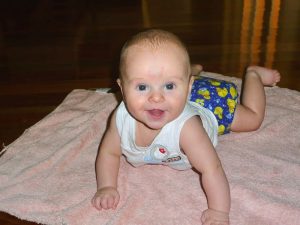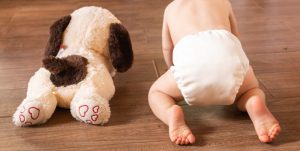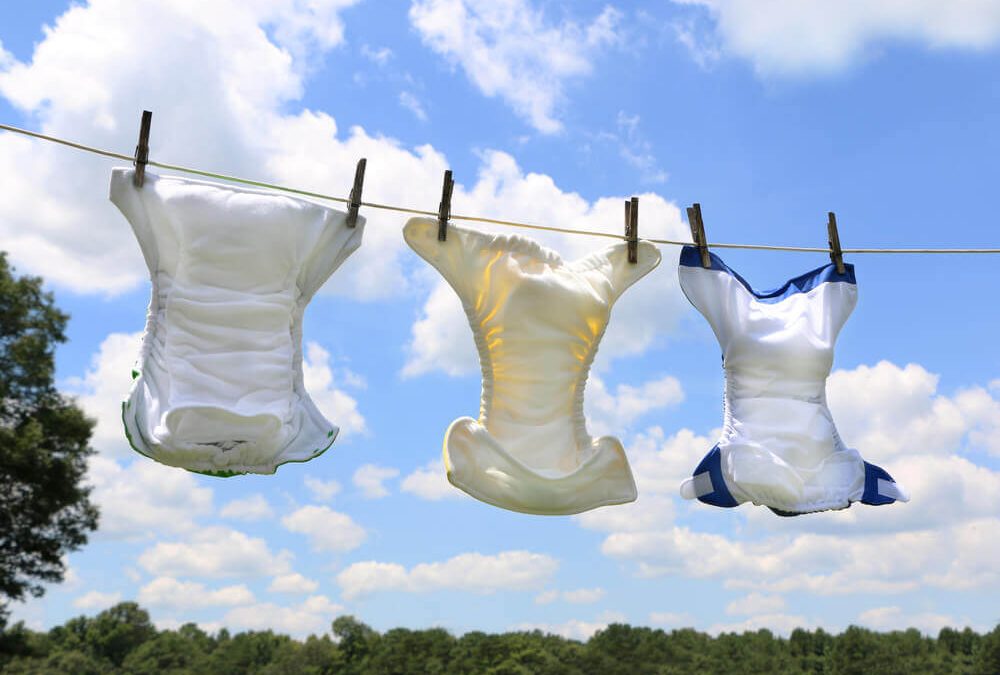Are cloth nappies better for the environment?
The short answer is yes. The nappies you choose for your bubba, must be considered if you want them to have a sustainable start to life. It’s estimated babies can have 5000 – 6000 nappy changes, from birth to toileting. So if you use disposable nappies that’s an enormous amount of waste.
But the impact of cloth nappies cany vary depending how you wash and dry them. Then there are different types of nappies, as they come in a range of styles and fabric types which are thing we need to consider. Being spoilt for choice can feel overwhelming, but cloth nappies are easy enough once you get started. So I’ve written this blog post, to cover the pros and cons of cloth nappies, and what to look for when you buy them.
Before committing to use cloth nappies, my key concerns were
- The time and energy it would take with extra washing
- Water usage to wash them
- What about when you’re out
- How long they take to dry
- Others didn’t think it was a good idea
My motive for cloth nappies was to make the most sustainable choices for my babies, that I could. And although I wasn’t going to be deterred, there were some functional aspects which I had to consider before committing to them.
But not only do I feel we chose the best environmental outcomes, they became convenient because we didn’t have to keep buying them, we saved some money and it turned out that cloth nappies weren’t that hard to use – which I laugh at myself for now, because if previous generations could do it, why is it such a big deal these days?
A general tip I will give, is to take plenty of photos with those adorable nappy bums. Which might sound a little odd, if you’re new to the world of cloth nappies. But if you scroll down the page to the pics you will see exactly what I mean, they are just so darn cute. And I wish I’d taken more pics of my own kids now.
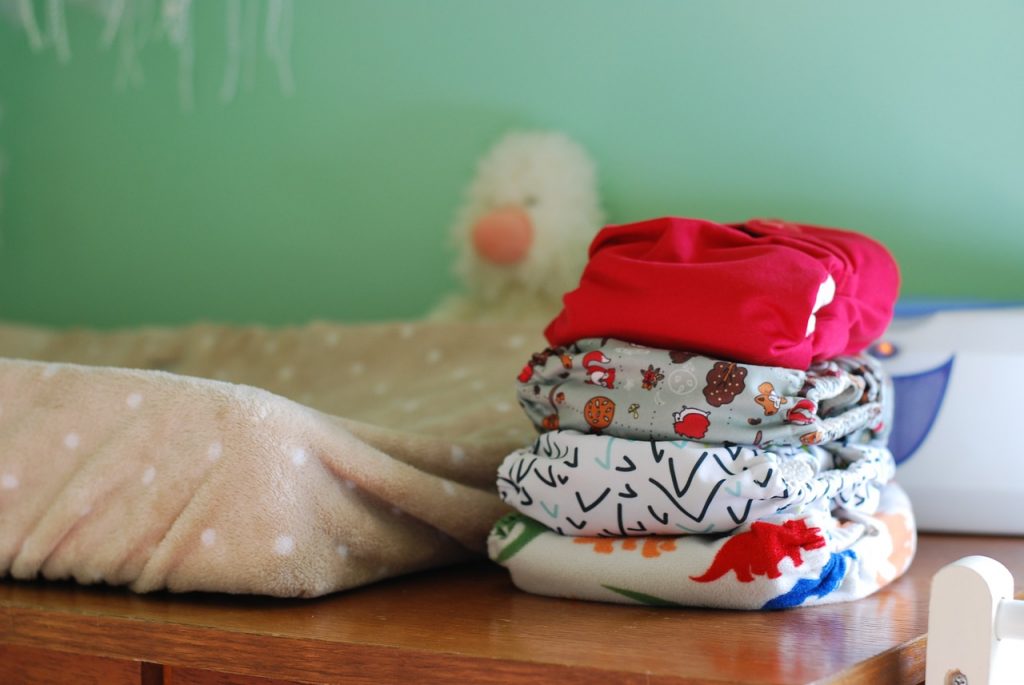
Use the clickable table of contents, to jump to the information you need to for your nappy research
Environmental impact of disposable nappies
Environmental impact of compostable nappies
Environmental considerations for cloth nappies
Cost of cloth nappies vs disposables
An alternative to nappies – elimination communication
Cloth nappies vs disposable vs compostable
All nappies, reusable, disposable and compostable have an environmental impact. As does everything we do in life. There are pros and cons with whichever nappy type you choose. So it’s important you choose what will work for you.
Environmental impact of disposable nappies
- It takes about one cup of crude oil to make each disposable nappy
- Polyethylene and Polypropylene, make up 30% of a single-use nappy
- Typical ingredients in disposable nappies are Wood Pulp, Sodium Polyacrylate, Polypropylene, Polyethylene, Adhesives, Polyester, Polyurethane Elastic, Polyolefin Elastic, Color-Changing Wetness Indicator, Colorants, Printing inks
- 3.75 million disposable nappies are used each day in Australia and New Zealand. Which is a lot of landfill. Sustainability Victoria
- Nappies in landfill will produce methane
Environmental impact of compostable nappies
Some consider compostable nappies to be a more sustainable alternative to traditional disposables. But this is largely dependent on the way they are disposed of. In that they may be composted which is good. But if compostable nappies aren’t composted, and end up in landfill, then you are negating the environmental benefits.
So if compostable nappies is something you’re considering then do your research first. Here are some things you need to take into account
- Not all nappies with biodegradable claims are fully compostable. Some have vague claims such as ‘plant-based’ material on baby’s skin, but don’t mention the other elements. So do some product research.
- Will you compost the nappies yourself? Does your council accept them for composting? Or is there a facility near which accepts compostable nappies. If in doubt, I would ask the manufacturer where, or how, they should be composted.
- I live in Victoria (Australia), and at the time of writing this, I’m not aware of any commercial facility who accepts them. But I’m aware of trials happening elsewhere in Australia
- Compostable nappies, are still single use, and while they contain less or no plastic in them, they still use energy and water resources to produce them.
- Any nappy which is disposed of in landfill will produce methane.
Environmental considerations for cloth nappies
Reusable nappies can vary in how sustainable they are to use, as there some elements which affect this. Primary considerations are the materials they’re made of and the way you wash and dry them.
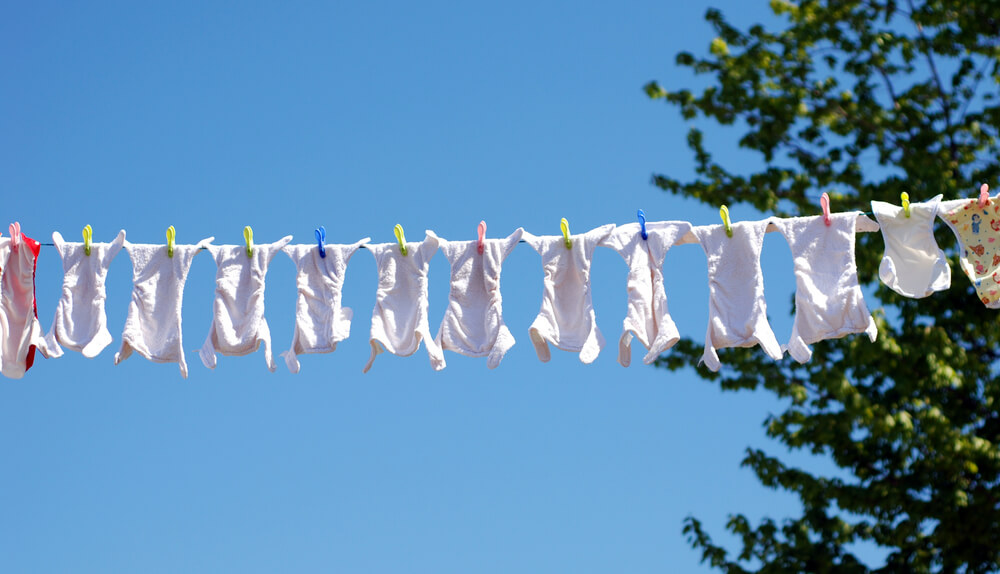
Washing cloth nappies
Laundry is probably the most feared aspect of cloth nappies. It certainly was something I considered. For my first born, I started with a nappy wash service, but I ditched after a couple of weeks. While I was happy with the service, I had no problems doing the washing. But it is an option to consider if you feel right for you.
Cloth nappies will create 2-3 extra loads of washing per week. Some suggest this adds a hidden cost if your motive is saving money from disposables. Yes there is a cost to do this, but not as much as buying single-use nappies. Here is a great breakdown to help you calculate the cost of washing cloth nappies so you can compare if for the finances, if you wish to.
As for water, if you weren’t washing the nappies, you’d be flushing the toilet. Water is also used to manufacture disposable nappies too. Overall we were ahead when using cloth nappies, but there are some considerations to take into account
- Washing cloth nappies in a hot wash, uses more energy and isn’t necessary.
- Doing a warm or cold wash is a better option
- Front-loading washing machine, will use less water, but this applies to anything you wash
- The detergent choice makes a difference too. Choose a more natural detergent option where possible. Again this applies to all of your washing
Pro tip – there is no need to soak nappies. You simply do a prewash cycle then your long wash cycle and it works a treat. Our machine could be set so it was super easy and we did it in the one go. Here is a washing guide for you.
Drying cloth nappies
If your nappy stash is too small, you’ll need to do laundry more often. From a drying perspective this will be ok in warmer weather, but if you have cold wet winters you need to take this into account so you can keep up with demand for clean and dry nappies. It’s best to avoid the tumble dryer, as this is less environmentally friendly because of additional energy use.
Cloth nappy drying tips
- It’s best to line dry cloth nappies for the nappy care and environment.
- Sunlight provides a natural bleach.
- When the weather isn’t great, using a clothes horse inside does the trick.
- Tumble drying increase environmental impact and washing costs
This is a basic summary for washing cloth nappies, but if you have more questions, there is a whole website which is connected to online forums dedicated to Clean Cloth Nappies.
Cloth nappy types
- There are many types of cloth nappies, such as flats, prefolds, AIO’s (all in one’s), pockets, night nappies and more. There is not best or better, it is personal preference. Here is a comprehensive guide to the different types of nappies from the Australian Nappy Association
- The choice of fabric can have an environmental impact both in the manufacture and washing
- Avoid or minimise materials such as microfiber, which are a type of plastic. This sheds fibres into the environment and being plastic doesn’t break down.
- Opt for cotton, bamboo, hemp or wool where possible
- Disposable liners can easily be replaced with washable liners
- Look after your reusable nappies properly and they can be used over and over again for multiple siblings. When you’re done having babies, it’s perfectly hygienic to pass well looked after nappies onto friends or family.
Lifecycle Assessment of nappies
If you to nerd out over this you’ll love the Life Cycle Assessment: reusable and disposable nappies in Australia by the University of Queensland is a comprehensive study. This research took into account: water resource depletion, non-renewable energy depletion, solid waste and land area for resource production. A range of scenarios were considered for each nappy, to account for variability in usage rates and washing practices.
But if you want a more general everyday overview, the Australian Nappy association has got a great summary.
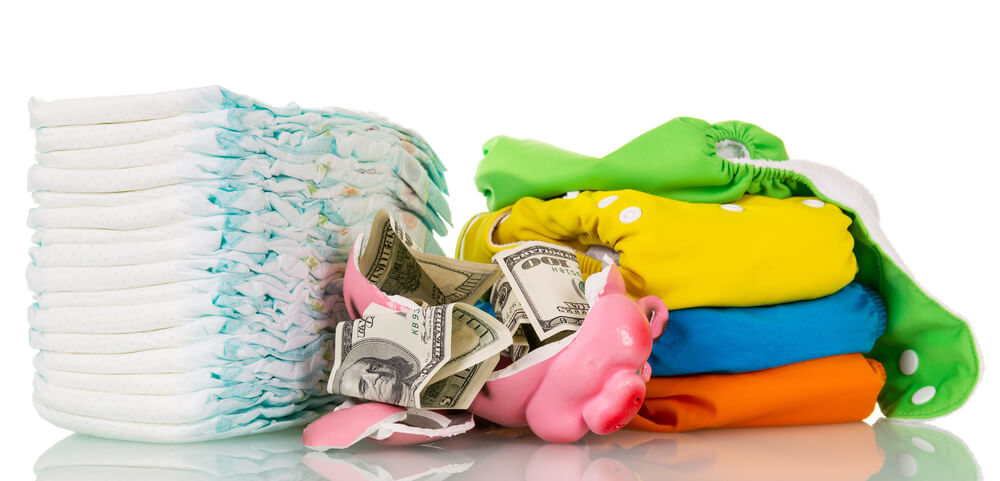
Cost of cloth nappies vs disposables
Disposables range from about 50 cents to $1 each. Depending on brand, and how long they wear them. This can add up to $2,500 to $5,000, or maybe more.
Cloth nappies do have an upfront outlay, so it can feel like a lot to get started, but you will recoup it. And if you have a 2nd child you will have little or no extra outlay, depending how far apart your babies are. When we were out of nappies, all of them were passed onto someone else.
You can get set up with about 30 cloth nappies for under $1000 new and it will be lower again if you buy them second hand.
If you get the newborn size, most babies have outgrown them by about 6 weeks, so they’re quite easy to pick up in excellent good condition and at a good price. There are many places to buy and sell cloth nappies such as the facebook group Buy and Sell your Modern Cloth nappies (Australia).
An alternative to nappies
Before we’re done here if you’re up for it, I want to stretch you a little further by suggesting you explore Elimination communication. This involves observing timing patterns and signals of toileting cues which means less wet nappies.
I acknowledge this isn’t for everyone. But it made sense for us, because I could see a distinct pattern and obvious signs, particularly with number 2’s. I did this with both my kids part time, and it worked for us. I didn’t start until 9 months with my first, because that’s when I learned of the practice. Here is more information on how Elimination communication can reduce nappy use.
There is no doubt that this enabled my boys to be out of nappies, at around 2 year old, which is earlier than most. This wasn’t my motive, but getting your kids out of nappies earlier reduces the need to keep washing and therefore reduce the environmental impact further again.
Cuteness with cloth nappies
As I mentioned, I wish I took more photos of my kids in cloth nappies, I loved the way the colours brightened the room and in summer all they needed was a nappy and a singlet and it looked way better than a disposable bum. Here are a few cute pics to share the nappy love (But only the first one is my own).
